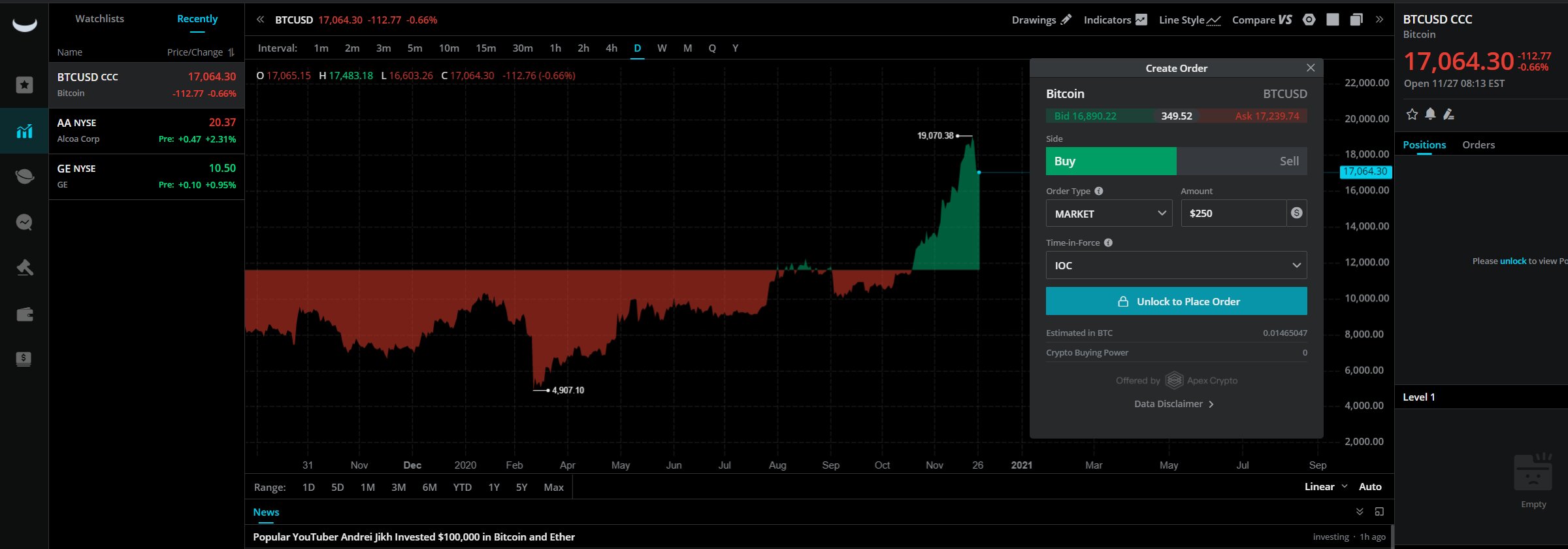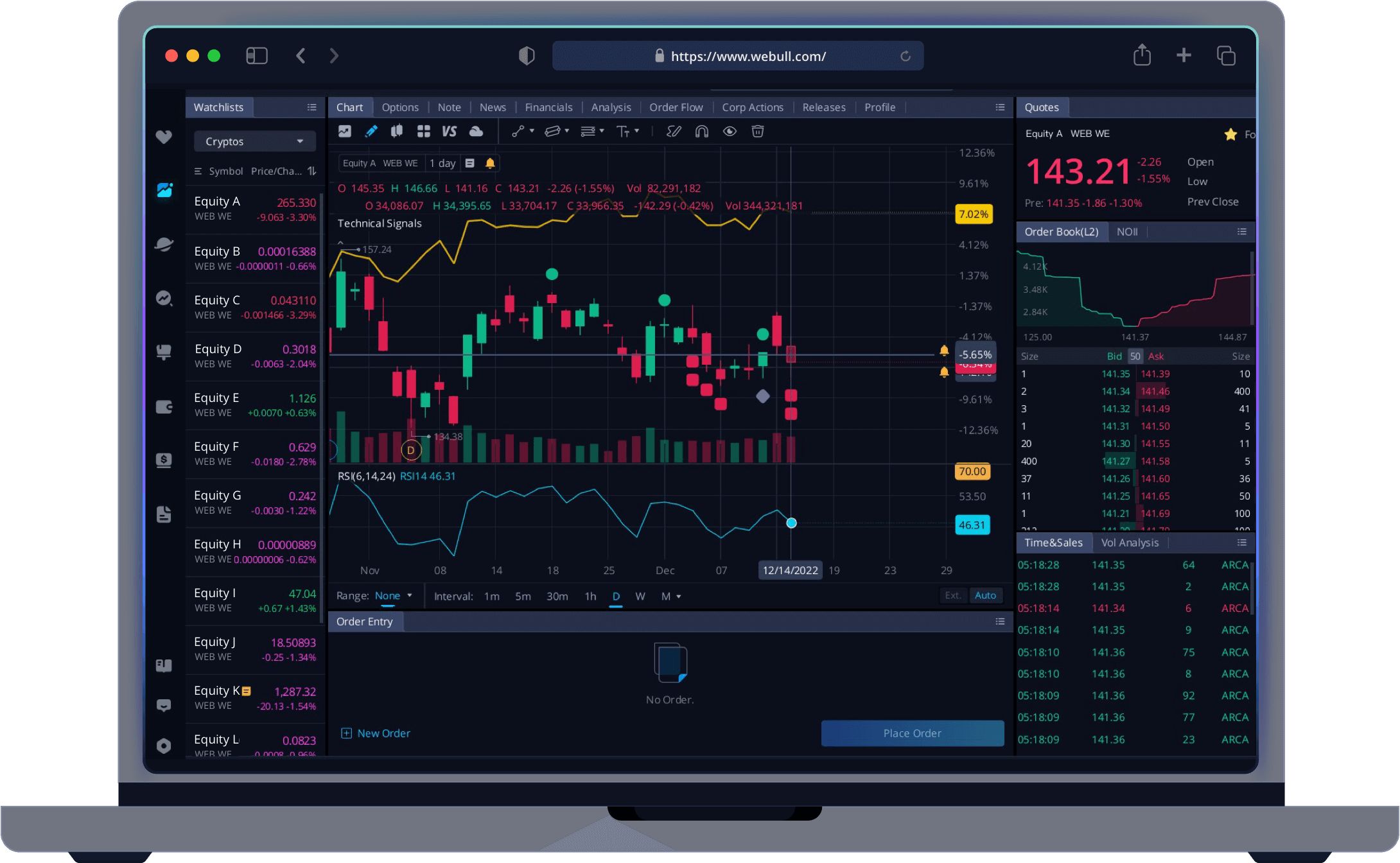GTC (Good ‘Til Canceled) Orders: What You Need to Know
GTC (Good ‘Til Canceled) orders are a type of order in trading that is used to instruct brokers to buy or sell assets at a specified price for an extended period. These orders remain active until they are executed, canceled, or expire. They offer flexibility and convenience for traders, allowing them to set their desired price levels and execute trades automatically when market conditions are met.
With GTC orders, traders don’t have to monitor the market constantly or manually enter orders every time they want to execute a trade. Instead, they can set up GTC orders and let them work in the background until the specified conditions are met.
Using GTC orders can be advantageous for various reasons. Firstly, GTC orders provide traders with the opportunity to capture potential market movements at their desired prices. They can set buy orders at lower prices or sell orders at higher prices, giving them a chance to maximize their profits or limit their losses.
Furthermore, GTC orders offer convenience and time-saving benefits. Traders can place these orders at any time, even outside regular trading hours, and they will be automatically executed when the market opens or the specified conditions are met. This allows traders to take advantage of market opportunities without being tied to their trading screens.
Traders often use GTC orders in conjunction with limit orders. By combining these two order types, traders can set a specific price at which they want to buy or sell an asset and keep the order active until it is filled. This strategy can be helpful, especially in volatile markets, as it allows traders to avoid emotional decision-making and stick to their pre-defined trading plans.
What Is a GTC Order?
A GTC (Good ‘Til Canceled) order is a type of order placed in trading that remains active until it is executed, canceled, or expires. It instructs brokers to buy or sell assets at a specified price or better, even if it takes an extended period for the conditions to be met.
When placing a GTC order, traders can set the price at which they want to buy or sell an asset. For example, if a trader wishes to buy a stock at $50, they can set a GTC order with that price. The order will remain open until the stock reaches or dips below $50, at which point it will be executed.
GTC orders are particularly useful for traders who cannot monitor the market at all times. Instead of having to constantly watch for favorable prices and manually enter orders, traders can use GTC orders to automate the process. This saves time and allows traders to take advantage of market opportunities that may arise outside of regular trading hours.
It’s important to note that GTC orders do not guarantee execution. Market conditions and price movements may prevent the order from being filled. However, GTC orders remain active until the trader cancels them or they expire.
Typically, GTC orders have a duration of 60 to 90 days, depending on the broker. However, some brokers may offer longer or shorter time frames for GTC orders. Traders should check with their specific brokerage to understand the duration and expiration policy for GTC orders.
It’s worth mentioning that GTC orders are different from day orders, which are only valid for the current trading day. GTC orders provide traders with more flexibility and a longer time frame for their orders to be executed.
In summary, a GTC order is a useful tool in trading that allows traders to set buy or sell orders at specified prices for an extended period. These orders automate the trading process and offer convenience to traders who cannot continuously monitor the market. However, it’s important to keep in mind that GTC orders do not guarantee execution and may expire if not filled within the specified time frame.
Benefits of Using GTC Orders
GTC (Good ‘Til Canceled) orders offer several benefits to traders in the realm of trading. Let’s take a closer look at some of the advantages of using GTC orders:
1. Flexibility: GTC orders provide traders with the flexibility to set their desired price levels for buying or selling assets. Traders can choose the price at which they want to execute a trade, allowing them to buy at lower prices or sell at higher prices to maximize potential profits.
2. Automation: With GTC orders, traders can automate the trading process. They don’t have to constantly monitor the market or manually enter orders when the desired conditions are met. Once the GTC order is set, it remains active until it is executed, canceled, or expires, leading to time-saving and convenience for the traders.
3. Opportunity Capture: GTC orders enable traders to capture potential market movements at their preferred prices. For example, if a trader wants to buy a stock once it reaches a certain price, they can set a GTC order with the desired price level. When the stock price reaches or falls below that level, the order will be executed automatically. This allows traders to seize opportunities even if they are not actively monitoring the market.
4. Execution Outside Regular Trading Hours: GTC orders can be executed outside regular trading hours. This is advantageous for traders who may not be available to trade during those times but still want to position themselves in the market. With GTC orders, traders can place their orders at any time and let them work in the background until the market opens or the desired conditions are met.
5. Discipline and Strategy: GTC orders can help traders stick to their trading plans and avoid making emotional or impulsive decisions. By predefining the desired price levels and letting the orders execute automatically, traders can maintain discipline and follow their strategies consistently.
6. Convenient for Investors: GTC orders are not only beneficial for active traders but also for long-term investors. Investors can use GTC orders to automatically execute trades for their investment portfolios. This allows them to take advantage of market opportunities and manage their investments efficiently.
Overall, GTC orders provide traders with flexibility, automation, and the ability to capture opportunities at their preferred prices. They offer convenience, time-saving benefits, and help traders adhere to their trading strategies. By utilizing GTC orders effectively, traders can enhance their trading experience and potentially improve their investment outcomes.
Understanding GTC Orders in Trading
GTC (Good ‘Til Canceled) orders are a common feature in trading that allows traders to specify the price at which they want to buy or sell assets for an extended period. To fully understand GTC orders, it’s important to grasp the key elements involved:
Order Duration: GTC orders remain active until they are executed, canceled, or expire. Typically, the duration of a GTC order is 60 to 90 days, although this may vary depending on the broker. It’s essential for traders to be aware of the specific time frames offered by their brokerage to ensure their orders remain active for the desired duration.
Execution Conditions: GTC orders are only executed when specific conditions are met. For example, if a trader sets a GTC buy order for a stock at $50, the order will only be executed when the stock price reaches or falls below that price level. Likewise, if a trader places a GTC sell order at $60, the order will only be executed when the stock price reaches or rises above that price level.
Price Protection: GTC orders offer price protection to traders. By setting a specific price level for buying or selling an asset, traders can avoid undesirable executions at unfavorable prices. This feature is particularly useful in volatile markets where prices can fluctuate rapidly.
Order Book: GTC orders are stored in an order book maintained by the broker. The order book keeps track of all the active orders and their respective details. This allows traders to monitor the status of their GTC orders and make any necessary adjustments or cancellations as needed.
Compatibility with Other Order Types: GTC orders can be used in conjunction with other order types to create more advanced trading strategies. For example, traders can combine GTC orders with stop-loss orders to automatically sell an asset if it reaches a certain price level, limiting potential losses. Likewise, GTC orders can be paired with take-profit orders to automatically sell an asset at a predetermined price, securing profits.
Order Priority: GTC orders are typically executed based on a first-come, first-served basis. The order that was placed first will have priority in execution. This ensures fairness and transparency in the order execution process.
By understanding these key aspects, traders can effectively utilize GTC orders in their trading strategies. Whether it’s to capture opportune market movements, automate trades, or protect against adverse price fluctuations, GTC orders provide traders with valuable tools to enhance their trading experience and potentially optimize their investment outcomes.
How Does a GTC Order Work?
GTC (Good ‘Til Canceled) orders function by allowing traders to set buy or sell orders at specified price levels for an extended period. Here’s a step-by-step breakdown of how a GTC order works:
Step 1: Placing the Order
Traders initiate a GTC order by specifying the asset they want to trade, the desired price level, and the quantity of the asset they wish to buy or sell. They then submit this order to their broker, who records it in the order book and ensures it remains active until it is executed, canceled, or expires.
Step 2: Monitoring the Order
Once the GTC order is placed, traders can monitor its status through their brokerage account. They can track the order in the order book, which shows details such as the order price, quantity, and time of submission. This allows traders to monitor their GTC orders and make any adjustments or cancellations if necessary.
Step 3: Order Execution Conditions
GTC orders will only be executed when specific conditions are met. For a buy order, the GTC order will be executed if the price of the asset reaches or falls below the specified price level. Conversely, for a sell order, the GTC order will be executed if the price of the asset reaches or rises above the specified price level. Until these conditions are met, the GTC order remains open and active in the market.
Step 4: Expiration or Cancellation
GTC orders have a specified duration, typically around 60 to 90 days, depending on the broker. If the order has not been executed within that time frame, it will expire and become void. Traders may also choose to cancel their GTC orders at any time before expiration if they no longer wish to execute the trade or if market conditions have changed.
Step 5: Order Execution
When the specified conditions for execution are met, the GTC order is automatically executed by the broker. This means that the trade is executed at the desired price level or better, depending on market conditions at the time of execution. Traders receive confirmation of the trade execution, and the transaction is recorded in their brokerage account.
By understanding the workings of a GTC order, traders can effectively utilize this order type to execute trades at their preferred price levels, automate the trading process, and potentially optimize their trading strategies.
GTC Orders vs. Other Order Types
When it comes to trading, there are various types of orders available to traders. GTC (Good ‘Til Canceled) orders are just one of them. Let’s explore how GTC orders compare to other order types:
Market Orders: Market orders are executed at the current market price. Unlike GTC orders, market orders prioritize immediacy over specific price levels. Market orders are executed instantly, while GTC orders are executed only when specific price conditions are met.
Limit Orders: Limit orders allow traders to set a specific price at which they want to buy or sell an asset. GTC orders are similar to limit orders in that traders can specify their desired prices. However, GTC orders remain active until executed, canceled, or expired, whereas limit orders may have a specific duration.
Stop Orders: Stop orders are triggered when an asset’s price reaches a certain level. When that level is reached, a stop order becomes a market order and is executed at the best available price. GTC orders, on the other hand, remain active until specified price conditions are met, regardless of whether the price reached certain trigger levels.
Immediate or Cancel (IOC) Orders: IOC orders are either executed immediately or canceled if not filled. They prioritize immediate execution over order duration. In contrast, GTC orders remain active until executed, canceled, or expired. GTC orders offer traders the flexibility of executing trades at specified prices over an extended period.
All-or-None (AON) Orders: AON orders require that the entire order be filled in a single transaction. If the entire order cannot be executed, the order is canceled. GTC orders do not have this requirement and can be filled in partial quantities over multiple transactions until the specified price level is met.
Trailing Stop Orders: Trailing stop orders are used to protect profits and limit losses. They automatically adjust the stop price based on the asset’s price movements. Trailing stop orders are dynamic and adjust based on preset parameters, while GTC orders remain fixed at the specified price level.
Each order type has its own advantages and considerations, and traders can choose the order type that best suits their trading goals and strategies. GTC orders provide the flexibility of setting desired price levels over an extended period, allowing traders to harness market opportunities at their chosen prices.
Tips for Using GTC Orders Effectively
GTC (Good ‘Til Canceled) orders can be a valuable tool for traders looking to automate their trading process and capture market opportunities at specific price levels. To make the most out of GTC orders, consider the following tips:
Define Clear Price Levels: Before placing a GTC order, conduct thorough research and analysis to determine the appropriate price levels for your trades. Set clear and realistic price targets based on technical indicators, market trends, and your trading strategy.
Consider Volatility: Take into account the volatility of the asset you are trading. High volatility can lead to frequent price fluctuations, so adjust your GTC order price levels accordingly to increase the chances of execution.
Monitor Market Conditions: Keep a close eye on market conditions, especially if you have active GTC orders. News events, economic reports, and unexpected market movements can impact the execution of your orders. Stay informed to ensure your GTC orders are aligned with current market dynamics.
Review and Update Orders: Regularly review and update your GTC orders if market conditions change or if your trading strategy evolves. Adjust your order price levels or cancel and replace orders when necessary to adapt to new market circumstances.
Utilize Stop-Loss Orders: Combine GTC orders with stop-loss orders for risk management purposes. By setting a stop-loss order alongside your GTC order, you can protect your positions in case the market moves against your trade.
Consider Order Expiration: Be mindful of the expiration duration of your GTC orders. Depending on the broker, GTC orders typically have a duration of 60 to 90 days. Keep track of the expiration date and renew or cancel orders as needed to ensure they remain active.
Test with Small Positions: When using GTC orders with a new trading strategy or technique, consider testing with small position sizes first. This allows you to assess the effectiveness of your GTC orders and make adjustments without exposing a significant portion of your portfolio to potential risk.
Regularly Review Order Book: Keep track of your GTC orders by regularly reviewing your order book in your brokerage account. This will help you stay organized and ensure that all your GTC orders are accounted for and properly managed.
Seek Professional Advice: If you’re new to using GTC orders or trading in general, consider seeking advice from experienced professionals or consulting with a financial advisor. They can provide guidance on the best practices for utilizing GTC orders effectively.
By following these tips and incorporating them into your trading routine, you can enhance the effectiveness and efficiency of your GTC orders, potentially improving your overall trading performance.
Potential Risks and Considerations with GTC Orders
While GTC (Good ‘Til Canceled) orders offer several benefits, it’s essential to be aware of the potential risks and considerations associated with using them. Here are a few key points to keep in mind:
Execution at Unexpected Prices: GTC orders do not guarantee execution at the specified price. Market conditions can change rapidly, especially in volatile markets, resulting in executions at prices different from the desired level. Traders should be prepared for potential slippage or unexpected executions.
Expiration of Orders: GTC orders have a specified duration, typically around 60 to 90 days. If the order is not executed within that timeframe, it will expire. Traders should regularly review their GTC orders and renew or cancel them as needed to ensure their orders remain active and aligned with their trading strategies.
Market Volatility and Gapping: During periods of high market volatility or significant news events, price gaps may occur. These gaps can cause orders, including GTC orders, to be executed at prices significantly different from the desired level. Traders should carefully consider the impact of market volatility on their GTC orders and adjust their price levels accordingly.
Order Priority and Filling: When multiple orders are placed at the same price level, the order that was placed first typically has priority in execution. This means that if there is limited liquidity at the specified price, some GTC orders may be partially filled or not filled at all. Traders should be aware of potential order filling limitations in highly liquid or fast-moving markets.
Technology and System Failures: There is always a risk of technology or system failures that could impact the execution and management of GTC orders. Internet outages, platform glitches, or other technical issues may prevent orders from being placed, canceled, or executed as intended. Traders should have contingency plans in place and consider alternative means of communication or trading during such situations.
Market Surveillance: Market regulations and exchange policies may require periodic review and surveillance of GTC orders. This is to ensure compliance with rules and prevent market manipulation or abuse. Traders should familiarize themselves with the regulatory framework and any specific requirements related to GTC orders in their respective markets.
Consideration of Market Conditions: GTC orders may not be suitable for all market conditions. In fast-moving or highly unpredictable markets, using other order types that provide more immediate execution, such as market orders or stop orders, may be more appropriate. Traders should evaluate the current market environment and consider the most suitable order type for their specific trading objectives.
Regular Monitoring and Adjustments: While GTC orders provide automation and convenience, it’s important to regularly monitor and review your orders. Market dynamics can change, and adjustments may be required to align with current conditions. Traders should stay vigilant and make necessary modifications or cancellations to their GTC orders as needed.
By being aware of these potential risks and considerations, traders can make informed decisions when utilizing GTC orders and navigate the markets more effectively.
Conclusion
GTC (Good ‘Til Canceled) orders are a helpful tool for traders, offering flexibility, convenience, and automation in executing trades at specified price levels. By understanding how GTC orders work and considering their benefits, traders can effectively incorporate them into their trading strategies.
With GTC orders, traders have the ability to set buy or sell orders at their desired prices and can take advantage of market opportunities even when they are not actively monitoring the markets. These orders provide convenience and time-saving advantages, allowing traders to automate their trading process and execute trades outside regular trading hours.
While using GTC orders, it is important for traders to monitor market conditions, regularly review and adjust their orders as needed, and be aware of potential risks such as unexpected price executions, order expiration, and market volatility. Traders should also consider alternative order types in certain market conditions and be prepared for technology or system failures.
Ultimately, the effective use of GTC orders requires a well-thought-out trading strategy, clear price targets, and regular monitoring. Traders should maintain discipline, adhere to their trading plans, and continually evaluate the suitability of GTC orders within their overall trading approach.
By mastering the use of GTC orders and understanding their strengths and limitations, traders can enhance their trading experience, seize market opportunities, and potentially optimize their trading outcomes.

























